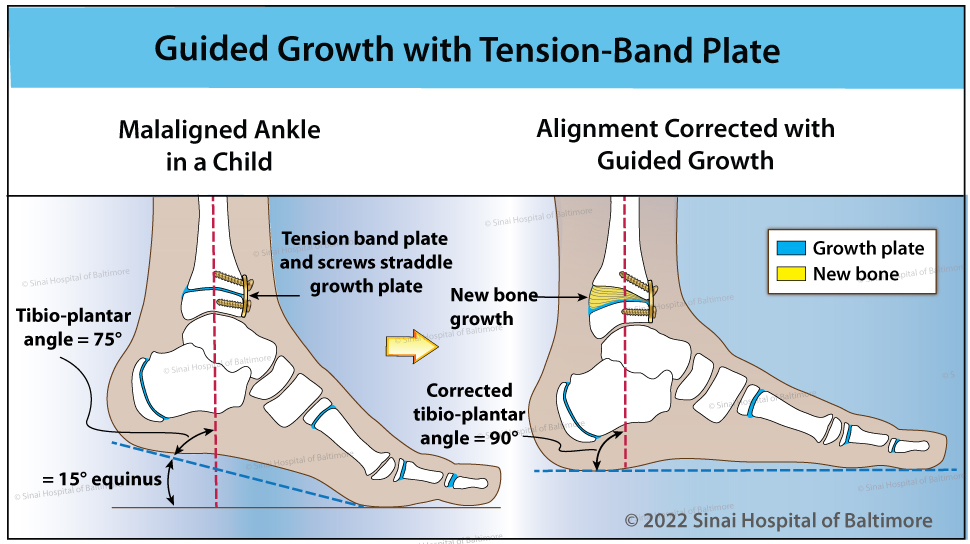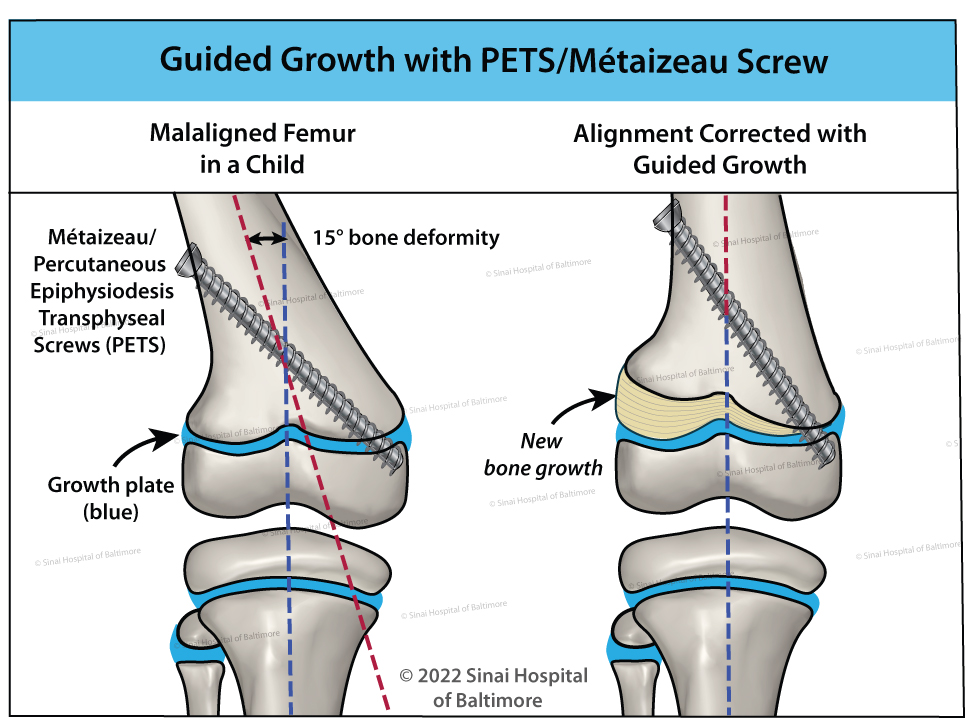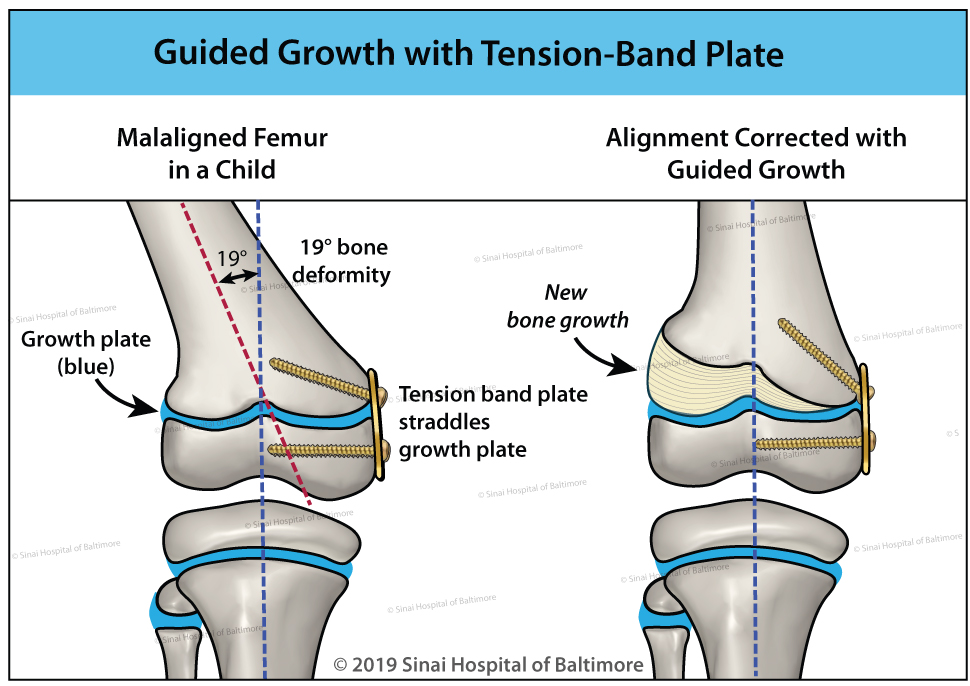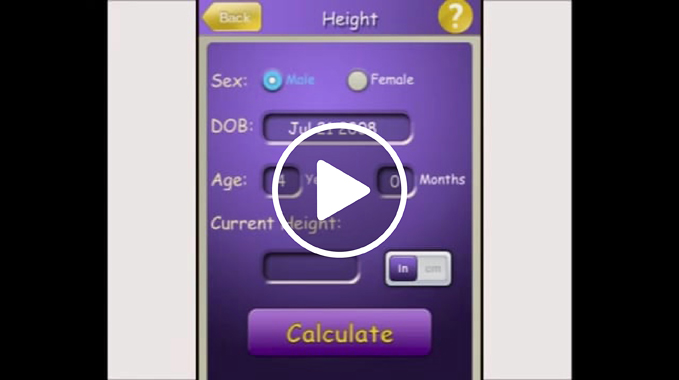Guided Growth (Hemiepiphysiodesis)
What is guided growth?
Guided growth is a minimally invasive surgical procedure where a tension-band plate (also called a guided growth plate) or a screw called a percutaneous epiphysiodesis transphyseal screw (abbreviated as PETS) is applied to a crooked bone to gradually straighten it as a child or adolescent grows. Guided growth is also sometimes called temporary hemiepiphysiodesis or growth modulation. It is an alternative treatment option to performing an osteotomy and then straightening a bone. It is often used to treat bowlegs, knock knees, ankle equinus, or crooked bones that were caused by infection, injury, congenital conditions or developmental problems.

What are tension-band plates?
Tension-band plates are about the size of a paperclip and are shaped like a number eight. Tension-band plates consist of a plate that is secured to the bone using two bone screws. The most commonly used tension-band plates are the eight-Plate and the Peanut Plate.
What are percutaneous epiphysiodesis transphyseal screws (PETS)?
PETS are standard bone screws that are inserted in such a way as to cross the growth plate at the peripheral edge. It temporarily restricts growth on the edge of the bone, so that the remaining growth plate causes the crooked limb to straighten. “Métaizeau screw” is a commonly used term for this screw.

What are growth plates?
Growth plates, also called physes, are responsible for bone growth in children. Growth plates are located near each end of the femur (thigh bone) and tibia (shin bone) and are composed of a thin (3 mm, 3/25 of an inch) layer of specialized growth cartilage. As children become adults, the growth plates disappear and are replaced by bone.
How does guided growth work?
Most bone growth in the legs happens near the knees, so a tension-band plate or Métaizeau screw is typically applied to the growth plates that are closest to the knee. In some cases, hardware is applied to the growth plate near the ankle. The tension-band plate or Métaizeau screw is applied on only one side of the involved knee or ankle and is positioned so that it straddles the growth plate. This position causes bone growth to stop/slow on that side of the growth plate. The other side of the growth plate continues to grow normally and this gradually straightens the bone over time. It takes 6 to 12 months before the bone fully straightens, though sometimes the tension-band plate or Métaizeau screw may need to remain in place for a year.

What happens during guided growth surgery?
Typically, the child/adolescent is placed under general anesthesia for less than an hour for this minimally invasive surgery. A 1-inch (2.5-cm) incision is made, and either a tension-band plate is inserted and secured with bone screws so that it straddles the growth plate or a Métaizeau screw is inserted. Most patients do not need to stay in the hospital overnight after the procedure.
What happens after guided growth surgery?
The patient is allowed to put weight on the leg immediately after surgery and will be able to return to normal activities within 2 to 3 weeks. Contact sports should be avoided for 3 weeks. There may be some swelling in the knee after the surgery, so physical therapy is recommended for a few weeks to prevent stiffness.
The patient will need to see the doctor 2 weeks after the procedure so that the doctor can check the incision and the knee’s range of motion. Follow-up visits should happen on a regular basis so that the doctor can monitor the gradual straightening of the bone. These follow-up visits are very important. If the tension-band plate or Métaizeau screw remains in place for too long, the bone might become over corrected (angled in the opposite direction). After correction is achieved, the tension-band plate or Métaizeau screw is removed during a surgical procedure. After removal, the bone will continue to grow normally.
What is rebound?
After treatment is completed and the hardware is removed, the bone may begin to grow crooked again. This happens in some patients and is called rebound. When rebound is anticipated, the doctor may recommend partial removal of the tension-band plate so that it can be easily reinserted in the future if the bone begins to grow crooked. Partial removal means that instead of removing the plate and both screws, the doctor will remove only one screw and leave the plate and the other screw in place. For patients treated with PETS, since there is only one screw in place, the entire construct is removed and can can be replaced in the future should rebound occur.
Is the timing of guided growth important?
The timing of correction, including removal of the growth modulation device (plate or PETS) is very important, as overcorrection or undercorrection can occur. It is important to maintain follow up during the correction phase. The Multiplier app developed at the International Center for Limb Lengthening can be used to predict timing of growth modulation procedures. Watch this video to see The Multiplier app in action:
Accuracy of calculations may be improved by examining X-rays of the hand or elbow to determine the child’s “bone age,” which is an estimate of the maturity of the skeletal system. A child’s bone age may be different than the child’s chronological age.
Does guided growth work in adults?
Guided growth does not work in adults (people who are skeletally mature). It only works in children and adolescents while their bones are still growing.

